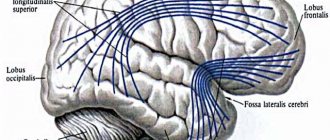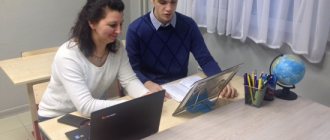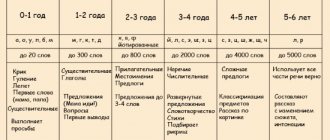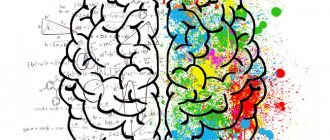Clinical study of praxis in adult patients
As we know, praxis is the ability to perform successive sets of conscious voluntary movements and perform purposeful actions. We present simple methods for clinical testing of praxis for adult patients.
Apraxia is the loss of skills acquired during life without pronounced signs of central paresis or coordination disorders. Types of apraxia are differentiated depending on the location of the lesion.
Kinetic praxis
Motor (kinetic, efferent) apraxia is manifested precisely by violations of the sequence of switching movements and a disorder in the formation of motor units that create the basis of motor skills. Motor apraxia is characterized by a disorder in the smoothness of movements (the effect of “getting stuck” on individual fragments of the movement being performed). Such signs are observed when the focus is in the lower parts of the premotor region of the frontal lobes (in right-handers - left and vice versa).
What we do:
We ask the patient to perform the fist-rib-palm test. Touch the surface of the table first with a clenched fist, with the edge of your palm and place your palm on the table, straightening your fingers. Please speed up the pace of the test. A patient with damage to the premotor region of the frontal lobe has difficulty performing such a task.
Kinesthetic praxis
Ideomotor (kinesthetic, afferent) apraxia occurs when there is dysfunction of the inferior parietal lobule in the region of the supramarginal gyrus. The hand does not receive afferent feedback signals, which results in an inability to perform fine movements.
Kinesthetic apraxia is detected when performing simple movements with real objects or when imitating such actions.
What we do:
We ask the patient to show how to use a hammer, light a match, pour water into a glass, or any other actions with household items.
Spatial praxis
Constructive (spatial apraxia, apractognosia) apraxia, which is manifested by impaired coordination of joint movements of the hands, difficulty in performing spatially oriented actions (for example, making the bed, getting dressed). There is no clear difference when performing such movements with eyes closed or open. This type of disorder includes constructive apraxia, which also manifests itself in the difficulty of constructing a whole from its parts.
Spatial apraxia occurs when the focus is localized at the junction of the parietal, temporal and occipital regions (in the area of the angular gyrus of the parietal lobe), and the cerebral cortex. When this particular zone is damaged, the synthesis of visual, vestibular and kinesthetic information deteriorates, thereby making it difficult to analyze the coordinates of the functioning of the whole organism.
What we do:
We ask the patient to draw a three-dimensional figure (for example, a cube) or copy the proposed geometric figure. These exercises are difficult for patients with constructive apraxia.
Regulatory praxis
Regulatory (“prefrontal”, ideational) apraxia includes disturbances in the voluntary regulation of activities directly related to the motor sphere. It manifests itself in a violation of the performance of complex movements, including the performance of a series of simple actions (simple actions can be performed correctly by the patient). The greatest difficulties arise when the patient is asked to imitate actions with missing objects, while with them the patient performs all actions correctly. Starting to perform an action, the patient switches to random operations, getting stuck on fragments of the started activity.
Regulatory apraxia occurs when the prefrontal cortex of the frontal lobe of the dominant hemisphere is damaged.
What we do:
We ask the patient to open the tube of toothpaste, squeeze a column of toothpaste onto the toothbrush and screw on the cap of the tube; please show us how to stir sugar in a glass with a spoon.
The concepts of “gnosis”, “mnesis”, “praxis”
General provisions of the theory of systemic dynamic localization of VMF. Basic concepts in neuropsychology
In the conceptual apparatus of neuropsychology, two classes of concepts can be distinguished. The first is concepts common to neuropsychology and general psychology; the second is the actual neuropsychological concepts, determined by the specifics of its subject, object and research methods.
The first class of concepts includes such as “higher mental function”, “mental activity”, “psychological system”, “mental process”, “speech mediation”, “meaning”, “personal meaning”, “psychological tool”, “image” ", "sign", "action", "operation", "interiorization" and many others. The content of these concepts is presented in a number of manuals and monographs devoted to general psychological problems (L.S. Vygotsky, 1960; A.N. Leontiev, 1972, 1977; A.R. Luria, 1973, 1979; B.F. Lomov, 1984; A.V.Petrovsky, M.G.Yaroshevsky, 1996, etc.).
The second class of concepts consists of neuropsychological concepts proper, which reflect the application of general psychological theory to neuropsychology - a specific field of knowledge, the subject of which is the study of the brain organization of mental processes, emotional states and personality based on the material of pathology and, above all, on the material of local brain lesions. Taken together, these concepts constitute a certain system of knowledge or theory that, from a unified standpoint, explains the patterns of disturbances and restoration of higher mental functions in local brain lesions and substantiates ideas about their brain organization. This theory, on the one hand, is able to explain the diverse clinical phenomenology of mental disorders, and on the other hand, it can satisfactorily predict new facts and patterns.
The concepts of “gnosis”, “mnesis”, “praxis”
Gnosis is a collective concept for the processes of perceptual categorization (recognition) of stimuli of different modalities.
Subject visual gnosis
- the most important for orientation in the surrounding reality. Thanks to it, a person distinguishes objects. The formation of visual gnosis begins with the recognition of real objects and realistic images.
Color Gnosis
also develops gradually. First, the bright colors of the spectrum (red, blue, green) are mastered, then less bright ones - white, black, brown, orange.
Facial Gnosis
- a special type of visual gnosis. It is formed relatively in isolation from other types of visual-gnostic activity. The first thing a child visually assimilates is the face of the mother or someone close to him. Then the ability to distinguish and remember other faces is acquired. Needless to say, memory for faces is essential for communicating with other people throughout life.
Simultaneous Gnosis
- this is the ability to see complex images as a whole, to put details into a single whole, highlighting essential and secondary features.
Auditory gnosis
characterized by the need to perceive a sequence
of stimuli realized over
Tactile Gnosis
- this is the ability to recognize the surface and texture of a material by touch; recognize the shape of an object; and also receive heat and pain signals.
Mnesis – translated from Latin means memory. Instructions by A.R. Luria that visual memory (mnemonic activity, mnesis) is a necessary condition for the formation of writing and reading skills mnesis (memory, visual analysis and synthesis) Mnesis is visual memory!
Praxis is a practical (objective) action .
Impaired ability to reproduce these actions is called apraxia
It is fundamentally important that patients with apraxia lose the ability to perform movements and actions voluntarily . Involuntarily, these same actions can be easily performed by them
He divided all praxis actions into kinesthetic (sensitive) and kinetic (motor ), thus postulating the presence of two
- kinesthetic and kinetic.
Kinesthetic praxis A.R. Luria designated as afferent ,
and kinetic - as
efferent .
This clarified the understanding of praxis as one of the highest mental functions, and apraxia as its pathology.
The term afferent means “centripetal,” implying the direction of nerve impulses from the periphery to the center.”
The term efferent means " centrifugal", implying
The ability to perform meaningful objective actions without objects (by imitation) is called symbolic praxis .
occupies a special place . It indicates a significant degree of differentiation of hand actions.
Even more complex than digital praxis is oral praxis .
It is formed on the basis of less objective, and therefore more abstract, actions. Oral praxis movements include the ability to blow, click, click your tongue, puff out your cheeks, etc., according to instructions.
The most complex of all types of praxis is articulatory ,
those. the ability to pronounce speech sounds and their series (words).
Afferent articulatory praxis is the ability to reproduce isolated speech sounds, their articulatory patterns (postures), which are often also called speech kinesthesia or articulomes.
Efferent articulatory praxis is the ability to pronounce series
speech sounds.
| 7. The main directions for solving the problem of “brain and psyche” The first direction is “narrow” localization or theories of centers (a specific area responsible for PF). (Represented by F. Gall, K. Kleist, P. Broca, K. Wernicke and others) considered the g/m cortex, which is the substrate of the PF, as a collection of many centers of indecomposable mental abilities. Each of them is responsible for a specific PF. For example, for speaking, for writing, for reading, for thinking, for memory, etc. The second direction , opposing points of view, is anti-localizationism. The theoretical constructions of representatives of this direction (K. Goldstein, F. Goltz, K. Lashley) were based on clinical facts of spontaneous recovery of impaired functions; on facts, when no clear symptoms are visible in the presence of foci of brain damage. They considered the brain as a single undifferentiated whole, with which all PFs are equally associated, which were considered as indivisible mental abilities (the same as in the theories of localizationists). It has been suggested that all brain regions are equal in relation to the PF. It followed from this that it is not the location of the brain lesion that is important, but the volume of the lesion - the larger it is, the more functions are impaired. The third direction is eclectic. It tried to combine both. The hypotheses of the representatives (K. Monakov, G. Head) were confirmed by clinical data that there are areas in the g/m cortex, when damaged, violations of completely specific functions are found. It was assumed that elementary PFs (movements and sensitivity) could be localized, and complex ones associated with the processing of symbolic information (for example, thinking, imagination, etc.) should be correlated with the entire brain. |
| 8. The brain as a substrate of mental processes. The brain as a substrate of mental processes is a single system, a single whole, consisting of various sections and zones that perform different roles in the implementation of mental functions. All data (anatomical, physiological, clinical) indicate the leading role of the cerebral cortex in the cerebral organization of mental processes. In neuropsychology (based on the study of various local brain lesions), a structural and functional model of the brain was developed. This model was proposed by Alexander Romanovich Luria, who created it based on the study of a large number of patients with traumatic brain injuries. According to this model, the entire brain can be conditionally divided into three blocks: I block ENERGY or block regulating levels of brain activity; II block of INFORMATION RECEPTION, PROCESSING AND STORAGE; III block of PROGRAMMING, REGULATION AND CONTROL OF THE PROGRESS OF MENTAL ACTIVITY. |
| 9. Cortical fields and their function. There are three main groups of fields in the cortex: primary, secondary and tertiary fields. -Primary fields are associated with sensory organs and organs of movement on the periphery; they mature earlier than others in ontogenesis and have the largest cells. Each zone is responsible for a specific analyzer. These fields analyze individual stimuli entering the cortex from the corresponding receptors. When the primary fields are destroyed, so-called cortical blindness, cortical deafness, etc. occur. The fields are built by the topical principle, in which each section of the receptor surface corresponds to a specific section in the primary cortex (projection field). The representation of a receptor site depends on its functional significance. Primary fields analyze as much as possible the various parameters of a stimulus of a certain modality, and the characteristics of the stimulus are remembered. Primary fields are homogeneous in cellular composition, therefore they are designated as modality-specific (olfactory fields contain only olfactory cells). Despite the universality of the physiological and biochemical mechanisms that ensure the functioning of the brain, its different parts have different functional specializations, representing different modalities. -Nearby are secondary fields, or peripheral zones of analyzers, which are connected to individual organs only through primary fields. They serve to summarize and further process incoming information. Individual sensations are synthesized and determine the processes of perception. (gnostic field) When secondary fields are damaged, the ability to see objects and hear sounds is retained, but the person does not recognize them and does not remember their meaning. Both humans and animals have primary and secondary fields. -The furthest from direct connections with the periphery are the tertiary fields, or the overlap zones of the analyzers. Only humans have these fields. The fields are located outside the nuclear zones of the analyzers, located on the border of the occipital, temporal and parietal cortex and do not have access to the periphery. The neurons of these zones are multimodal, which ensures their response to generalized signs of external stimuli (associative field). The tertiary fields of the cortex are multifunctional; processes of higher analysis and synthesis take place here; based on the synthesis of afferent stimuli, goals and objectives are developed, and motor activity is programmed. Also, the integration of information in tertiary fields contributes to the formation of thinking (inner speech). With congenital underdevelopment of the tertiary fields, a person is not able to master speech and even the simplest motor skills. -A special area is the TPO area; it includes the temporal, parietal and occipital zones. It is responsible for the integration of complex mental functions. Differences in the functional specificity of primary, secondary and tertiary fields also determine differences in their ability to replace each other (compensate) in the case of pathology. The destruction of primary fields is not reparable, i.e. Lost physical hearing, vision, smell, etc. are not restored. The functions of damaged secondary fields are subject to compensation, carried out by connecting other, “healthy” brain systems and restructuring the way they operate. The functions of the affected tertiary fields are compensated relatively easily due to a variety of modalities, allowing one to rely on a powerful system of associations stored in each of them and between them. It is necessary, however, to remember that in this case, age thresholds and the time when restoration measures are started are important. 10. Functional asymmetry is a fundamental pattern of brain function. Functional asymmetry is a property of nervous tissue, characterized by the distribution of mental functions between the hemispheres of the telencephalon. One of the main properties is not only the specialization of the right or left hemisphere, but their careful and precise interaction. This phenomenon is considered as a fundamental law of the functioning of the higher nervous system. Lateralization is inherent not only in humans, but also in animals. The phenomenon of asymmetry is explained by one genetic model, which states that there is a certain gene that is a factor in the “right shift”. If this gene is in a dominant position, then most likely the person will be born right-handed, and vice versa: the recessive position of the protein determines the left-handedness of the individual. Interaction of hemispheres in functional asymmetry. Specialization exists thanks to two hemispheres. They are connected to each other by the corpus callosum - it is this that ensures the exchange of information between the left and right hemispheres. However, other neural spikes are also responsible for the “wiring”. They serve as channels through which the hemispheres synchronize with each other. Researchers have shown that each structure is involved in the exchange of specific information: - The anterior region of the corpus callosum is responsible for the exchange of somatosensory information. - The posterior part of the corpus callosum carries visual information. |
| 11. Stages, provisions and directions in the theory of functional asymmetry of the brain. The theory of functional asymmetry of the GM. Stage 1: The concept of left-hemisphere dominance was based on the absolute opposition of the left and right hemispheres. Stage 2: ideas about the relative dominance of the left hemisphere (in right-handed people) in relation to speech functions and speech-mediated mental processes. As well as the relative dominance of the right hemisphere in the implementation of gnostic functions. Stage 3: the problem of dominant hemisphere specificity, i.e. within the framework of the development of neuropsychology, there is a certain functional specificity of the hemisphere, i.e. Each hemisphere makes a certain contribution to the development of any mental function. That. At present, several basic provisions regarding interhemispheric asymmetry of the brain can be considered established. 1) Interhemispheric asymmetry of the brain, understood as differences in nature and not equal in importance to the participation of the left or right hemispheres in the implementation of various mental functions, is not global, but partial, which is why they distinguish: - motor asymmetries (this is the disparity in the motor activity of the arms, legs, face, half of the body, controlled by each hemisphere of the brain. varieties - manual or manual, skin, etc.) - sensory asymmetries (this is the disparity in the perception by each of the hemispheres of objects located to the right and left of the middle plane of the body: visual, auditory, tactile, olfactory) aya) - mental asymmetry (asymmetry of the brain organization of speech and other HMFs: perceptual, mnistic, intellectual) - morphological asymmetry (unevenness of the structure of the brain, in connection with this they distinguish: “pure right-handers” with the leading right hand, ear..., right-handed or retrained with a leading ear or eye there will be a left side, left-handed people with a leading left hand, ambidextrous people - both left and right) 2) Each specific form of interhemispheric asymmetry is characterized by a certain degree or measure, taking into account quantitative indicators, we can talk about strong or weak asymmetry. Using the asymmetry coefficient, one can highlight the weakness of one or another side of the GM. 3) Interhemispheric asymmetry of the brain in an adult is a product of biosocial mechanisms. The basis for the functional specialization of the hemispheres are innate mechanisms, however, in the process of child development, interhemispheric interaction and interhemispheric asymmetry occur. That. Functional asymmetry refers to the different nature and unequal importance of the participation of the left and right hemispheres of the brain in the implementation of mental functions. Directions in the study of problems of interhemispheric brain asymmetry. 1) Experimental study of specific disorders (verbal and non-verbal) of mental functions with damage to the symmetrical parts of the left and right hemispheres of the brain. 2) Comparison of holistic neuropsychological syndromes that arise when symmetrically located structures of the left and right hemispheres are damaged. The main neuropsychological syndromes described by A. R. Luria are predominantly syndromes of damage to the left hemisphere. The study of left hemisphere lesion syndromes began relatively recently. |







